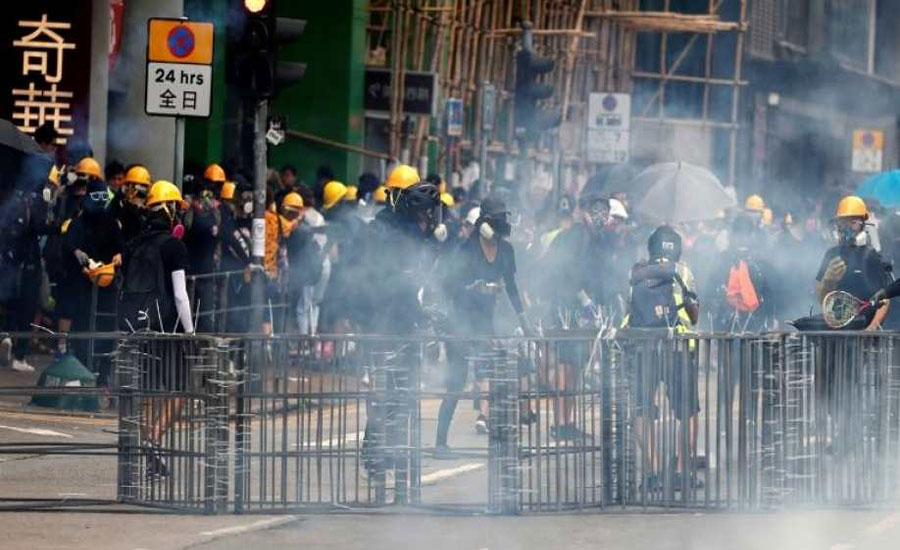Tenth straight weekend: HK police, protesters refine battle tactics

HONG KONG (Reuters) - Hong Kong police and protesters clashed in cat-and-mouse encounters across the city on Sunday, marking a shift in tactics during a tenth straight weekend of unrest in the former British colony where many are chafing at Chinese rule.
Seeking to clear streets more quickly than before, police fired tear gas and charged with batons at flashpoints from big shopping boulevards to bar-lined streets and railway stations.
Demonstrators, who at one point lobbed two petrol bombs, retaliated with a flash-mob strategy - withdrawing when pressed, only to re-appear elsewhere relentlessly.
The increasingly violent protests since June have plunged the Asian financial hub into its most serious crisis in decades and are one of the biggest popular challenges to Chinese leader Xi Jinping since he came to power in 2012.
Despite the intense police response and a toughening stance from China, the movement that began two months ago in opposition to a bill allowing extradition to the mainland still seems to enjoy broad support in the city of more than 7 million people.
“We’ve been running all day but we’re not tired,” said Ah Sing, a protester in his 30s, wearing a black vest and surgical mask while he rushed from one protest to another.
“This is our response to Carrie Lam,” he added, referring to the city’s Beijing-backed leader. “If she doesn’t listen to the people and respond to our reasonable demands, we’re going to continue to spread protests across Hong Kong.”
Beijing says criminals and agitators are stirring violence, encouraged by “interfering” foreign powers including Britain.
Hong Kong’s government called the protests “unlawful assemblies” and said a petrol bomb had injured a policeman.
There is “no longer any fixed period of time or fixed locations for these persistent and large-scale illegal and violent acts”, which have deprived ordinary people of the right to carry on their daily lives, a government spokesman said in a statement.
Demonstrators say they are fighting against the erosion of the “one country, two systems” arrangement enshrining some autonomy for Hong Kong when China took it back in 1997.
“Independence for Hong Kong is not viable in the near term,” acknowledged protester Sam, 23, a barrister, while music pumped from cabaret lounges in Wan Chai’s bar district behind him. “But we have to fight for our freedoms and democracy.”
Shortly after, riot police fired volley after volley of tear gas at his makeshift barricade of railings, wood and police cones, forcing protesters to withdraw.
“Why are you hitting my friends? They are teenagers,” politics student Sabrina, 19, cried out after officers went in with batons at crowds in a shopping district at Kowloon.
“Who are you working for? The Communist Party? The Chinese government? How can you sleep at night?”







